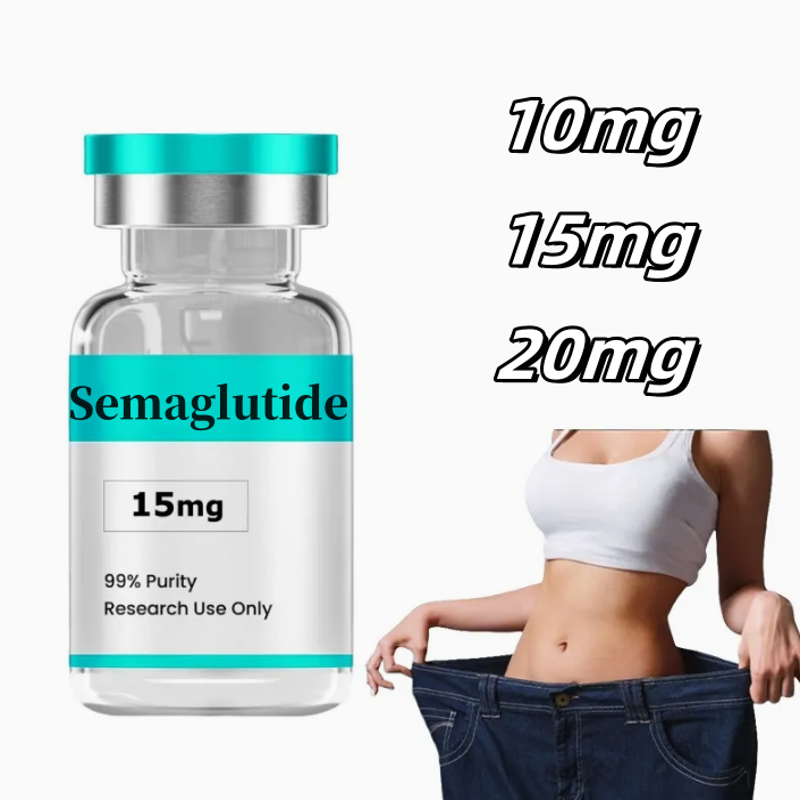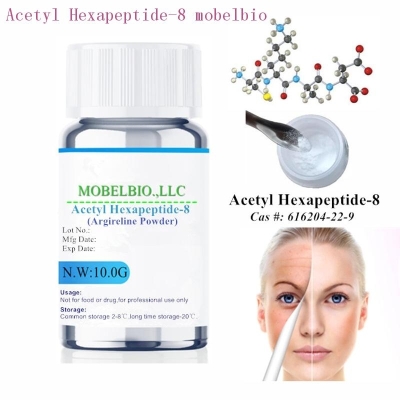Study and application of small peptide in pig nutrition
-
Last Update: 2013-01-11
-
Source: Internet
-
Author: User
Search more information of high quality chemicals, good prices and reliable suppliers, visit
www.echemi.com
Most of the final products of protein digestion in the digestive tract are small peptides rather than free amino acids Small peptides can be absorbed completely and enter the blood circulation in the form of two or three peptides Small peptides play an important role in protein nutrition In order to achieve the best production performance of animals, a certain amount of small peptides are needed The research and application of small peptides in pig nutrition at home and abroad are reviewed With the development of protein and amino acid nutrition, people have gradually realized the importance of peptide nutrition Agar (1953) observed that the intestinal tract was able to transport diglycopeptide completely Later, naey (1959) and Smith (1960) first proposed the exact evidence that peptide can be completely transported The simplest peptide is a dipeptide composed of two amino acids, including one peptide bond Peptides containing 3, 4 and 5 amino acids are called three, four and five peptides, respectively The straight bond peptide formed by 2-10 amino acids through peptide bond is called oligopeptide or small peptide In recent years, the results show that the utilization of protein in pig intestine is not limited to the form of free amino acids, but mostly absorbed in the form of small peptides composed of 2-3 amino acids Le Guowei (1997) reported that small peptides can enter systemic circulation completely through intestinal mucosal cells In this way, the view that peptides are completely absorbed has been paid more and more attention, and peptide research has been carried out 1 Drockcoopdeng et al (1962) found the existence of special peptides in plasma, such as peptides containing proline amino acids Chen et al (1962) and Adibi (1978) used electromagnetic probes to detect that the final products of proteins in small peptides were small peptides and amino acids These provide further evidence for the mechanism of small peptide absorption The protein in the diet was degraded into free amino acids and small peptides by a series of enzymes in the digestive tract of pigs The small peptides in the diets were affected by aminopeptidase A and aminopeptidase N at the brush border of the small intestine villi of pigs, and finally absorbed and utilized by pigs in the form of free amino acids and small peptides The absorption mechanism of small peptide and amino acid is completely different At present, the results show that there are at least three absorption mechanisms as follows: ① the absorption of free amino acids is an active transport process relying on Na + pump, while Matthews (1987) and VIN cenzini (1989) found that the absorption of small peptides is an energy consuming transport process mainly depending on the concentration conductivity of H + or Ca2 + ions This mode of transport is inhibited by hypoxia or addition of metabolic inhibitors ② The absorption of most small peptides requires an acidic environment, and one molecule peptide requires two H +, which is a pH dependent non energy consuming Na + / H + exchange transport system Daniel et al (1994) reported that the power of small peptide transport comes from the electrochemical gradient of proton The power generated by proton transport to the cell drives small peptide to move to the cell In this way, small peptide enters the cell in the form of diffusion, resulting in the decrease of pH in the cytoplasm, thus activating Na + / H + channel H + is released from the cell, and the pH in the cell returns to the original water In the absence of H +, the absorption of small peptide depends on the substrate concentration outside the membrane When the concentration of H + outside the cell is higher than that inside the cell, it reverses the substrate concentration transport through the co transport system of electricity production ③ Glutathione (GSH) transport system Vincenzini (1989) reported that the transmembrane transport of GSH is related to the concentration gradients of sodium ion, potassium ion, lithium ion, calcium ion and manganese ion, but not hydrogen ion Because GSH has antioxidant effect in biofilm, GSH transport system may have special physiological significance 2 The nutritional and physiological effects of small peptides on pigs 2.1 The results of Boza et al (1995), infante et al (1992), monchiand Rerat (1993) pullain et al (1991) showed that when small peptides were used as nitrogen sources, the whole protein deposition was higher than that of corresponding amino acid or whole protein diets Pierzynowski et al (1997) reported that small peptides in the blood circulation can directly participate in the synthesis of tissue proteins, in addition to the complete utilization of small peptides in liver, kidney, skin and other tissues The kidney is the main site for digestion and absorption of peptides and reabsorption of amino acids Rerat et al (1998) reported that the concentration of plasma insulin was higher than that of free amino acid group after duodenal perfusion of small peptide One of the functions of insulin is to extend the peptide chain and increase the protein synthesis Wang et al Protein deposition is the result of the interaction of protein synthesis and degradation The increase of nitrogen deposition means the relative increase of protein synthesis rate or the relative decrease of protein degradation rate 2.2 promote the absorption and utilization of minerals found (1974) reported that metal ions located in the center of five or six membered ring complexes were absorbed in the form of small peptides through the brush like line of intestinal villi Li Yongfu et al (2000) added small peptide iron and dextroside iron to 1-21 day old piglets respectively, and measured the serum ferritin (SF) content at 14 day old The content of SF in the group with small peptide was higher than that in the group with dextroside iron and the control group, which indicated that mineral ions in the form of small peptide complex were more easily absorbed by the body The results of Zhang Binli (2000) showed that casein phosphopeptide (CPP) is a small peptide containing clusters of serine phosphate Under neutral and alkaline conditions, the central part of CPP combines with Ca, Fe, Zn plasma to prevent the formation of precipitation, greatly increasing the amount of dissolved Ca in the intestine, and effectively increasing the retention time of Ca in the body After being absorbed by poplar wall cells, CPP also absorbs C A is released to promote the absorption and utilization of ca 2.3 to avoid the absorption competition among amino acids Rubino et al (1971) observed that peptides did not affect the absorption of free amino acids, and different free amino acids did not affect the absorption of small peptides Pharasan et al (1987) reported that when lysine and arginine exist in the free form, they compete for the absorption site, and free arginine tends to reduce the lysine in portal vein; when lysine exists in the form of small peptide, the former has no effect on its absorption 2.4 to improve the immune capacity of pigs, small peptides can enhance the reproduction of beneficial bacteria, improve the synthesis of bacterial protein, and enhance the disease resistance Some studies have shown that small peptides can effectively stimulate and induce the activity of brush border enzyme of small intestine chorion, and promote the nutritional recovery of animals Jelle (1981, 1982) showed that tripeptides and macropeptides produced by hydrolysis of β - casein could promote phagocytosis of macrophages Storia (1994) synthesized a small peptide by using a segment of cDNA from pig bone marrow as a membrane plate, which inhibited both Gram-positive and gram-negative Andeson (1995) isolated a segment of NK lysine oligopeptide from pig small intestine, which had inhibitory effect on E.coli 2.5 the physiological regulation of small peptide directly acts as neurotransmitter and indirectly stimulates the secretion of intestinal receptor hormones or enzymes For example, the amino acid sequence of tyrphine (7-10 amino acid residues) produced by β - casein hydrolysis is similar to that of endogenous opioid peptides Five peptides (Tyr Pro Phe Gly IIE) and four peptides (Tyr Pro Phe Pro) were further purified from the hydrolysate of β - casein Le Guowei et al (1997) reported that the precursor of opioid peptide also exists in the pepsin hydrolysate of wheat grain protein, which can enter the blood circulation completely and play a physiological role as a neurotransmitter 3 The effect of small peptide on the performance of pig production small peptide is an important form of protein nutritional physiology It is of great practical significance to improve the production performance of animals with small peptides The results showed that adding a small amount of β endorphin or other peptide products to the diet could significantly improve the performance of pigs The results of Qian Lizhun (1998) test showed that the production level of high protein diet could be achieved by adding a certain amount of small peptide in a certain amount of low protein feed Parisini (1989) and others significantly increased the daily gain, protein utilization rate and feed conversion rate of growing pigs after adding a small amount of peptides to their diets Lotekniga et al (1994) reported that adding synthetic peptides to the diets of finishing pigs can improve feed return and lean meat rate Scheppach et al (1994) found that small peptides can effectively stimulate and induce the activity of small intestinal villus brush like line enzyme to increase, and exist in the chorionic enzyme activity to increase, which shows that the ability of enzyme to hydrolyze protein is improved, and the body's absorption of small peptides is enhanced It can be seen that small peptides are more valuable for piglets with immature digestive tract and low digestive enzyme activity By inducing the increase of some enzyme activities in the small intestine, it can advance the development of small intestine digestive function, promote the health of piglets and improve their production performance And two peptides, three peptides on the prevention and treatment of piglet diarrhea has a certain role Early weaned piglets fed diets supplemented with small peptides can significantly increase the activity of fatty acids and pancreatic amylase, and increase the height of small intestinal villi, and make the crypt shallow, so as to improve the digestion and absorption of nutrients, reduce diarrhea and promote growth The results of production experiments show that the small peptide can improve the performance of lactating sows, increase their lactation, and make their reconstitution faster and easier Weaning piglets have higher body weight and can reduce the body weight loss of sows Gao Xin et al (2000) showed that small peptides could improve the digestion and absorption of nutrients, improve the production performance and reduce the diarrhea index Wang Bilian et al (2000) fed piglets with a certain amount of small peptide The piglets in the experimental group gained 12.93% more weight than those in the control group, the diarrhea rate was reduced by 60%, and the economic benefit was increased by 15.62% than that in the control group 4 The application prospect of small peptide in pig feed is that compared with free amino acid, small peptide has the following characteristics: ① the absorption of them is completely different and independent mechanism; ② the absorption speed of amino acid residue of small peptide is faster than that of corresponding free acid; ③ the absorption of small peptide can avoid the competition between amino acids, so small peptide has more advantages than free amino acid in absorption Potential In recent years, great progress has been made in the study of small peptides It has been found that the release of small peptide in the process of protein digestion and hydrolysis is related to the quality of protein The release of small peptide is more when protein is high, and less when protein is low The release order of small peptides in protein feed was casein, fish meal, silkworm chrysalis, soybean meal, soybean cake, rapeseed meal and corn protein meal In the past, the ideal protein pattern of pigs was based on available amino acids Some experimental results showed that the best performance could not be achieved by using homozygous diet or low protein balanced amino acid diet Therefore, it is necessary to further study the proportion of small peptide and free amino acid in the optimal utilization of amino acid, and then design a more reasonable feed formula to make full use of protein resources to improve production efficiency At the same time, the proportion of amino acids and the mechanism of action of small peptides in pig feed on pig growth and immune regulation need to be further studied Further study on the absorption and metabolism of small peptides and their action forms will open up a new way for the development of protein nutrition theory.
This article is an English version of an article which is originally in the Chinese language on echemi.com and is provided for information purposes only.
This website makes no representation or warranty of any kind, either expressed or implied, as to the accuracy, completeness ownership or reliability of
the article or any translations thereof. If you have any concerns or complaints relating to the article, please send an email, providing a detailed
description of the concern or complaint, to
service@echemi.com. A staff member will contact you within 5 working days. Once verified, infringing content
will be removed immediately.







